ISSUE #39: Worm in My Kale
Bugstack is back with a double moth post.
Hello! It’s been a minute (a month) since I have posted here, and for that I sincerely apologize. I unofficially took all of July off to focus on other, much less important journalistic work, which meant I actually missed the one-year anniversary of Bugstack (July 21), so happy belated one year to Bugstack, to me, and to you, my readers and my fans, all of whom I hope have chosen to stick around through this quiet period. But I am back, and so are the bugs, and I simply can’t stomach wasting the last two months of summer when there are still so many little guys crawling and flying and hopping around out there.
I didn’t completely take July off—in case you missed it, Fran Hoepfner and I had our first Fran Magazine x Bugstack collab, in which we discussed all the bugs Fran saw and took pictures of during her stay in the Adirondacks in June, including a cyanide-spitting millipede and the internet’s sweetie-pie, the rosy maple moth. If you haven’t already, it’s definitely worth the read.
During my unofficial hiatus, I started cooking with kale* again, and about a month ago, while washing the leaves of the latest batch I had just bought from the store, I saw that one of the leaves had a cocoon nestled right in the center of a leaf. It was a thin cocoon, and beneath the layer of webbing I could see the definite outline of a chrysalis, bright lime green with a couple of brown marks. I was sure it was dead, but when I went to gently peel it off of the leaf the chrysalis twitched in my hand. I’d had the leaves in the fridge for about a day, so it was cold, but not dead, and, warmed by my hand, it woke up.
A bit of googling told me this was the cocoon of a cabbage looper moth, a common yet minor agricultural pest who chooses cruciferous vegetables—broccoli, cabbage, kale—as its preferred host plants.
I put it in a tiny jar and wrapped a bit of cling film with air holes punched through it around the mouth, a reflex from a childhood spent catching anything I could get my grubby little hands on, and placed it on a shelf where I could check on it every day. Sure enough, a couple days later, I noticed movement in the jar. Some time during the night a mottled brown moth had hatched out of its chrysalis and was fanning its wings. I quickly took it downstairs to let it out, conscious of its fragile wings crammed into a tight space, but as soon as I took the film off it flew up and over the neighbors’ fence.
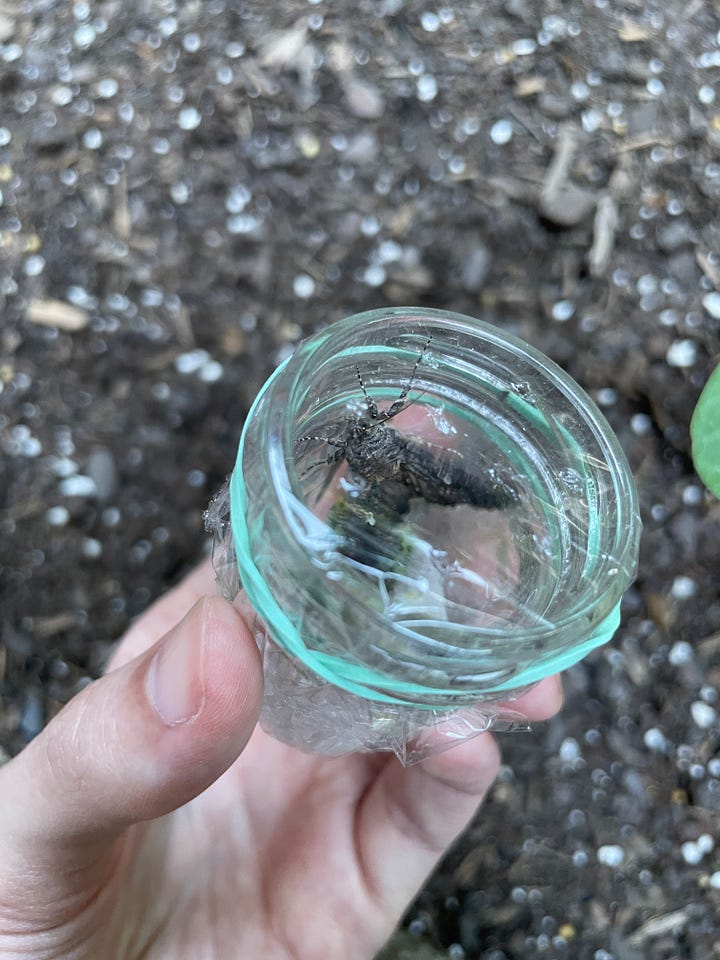
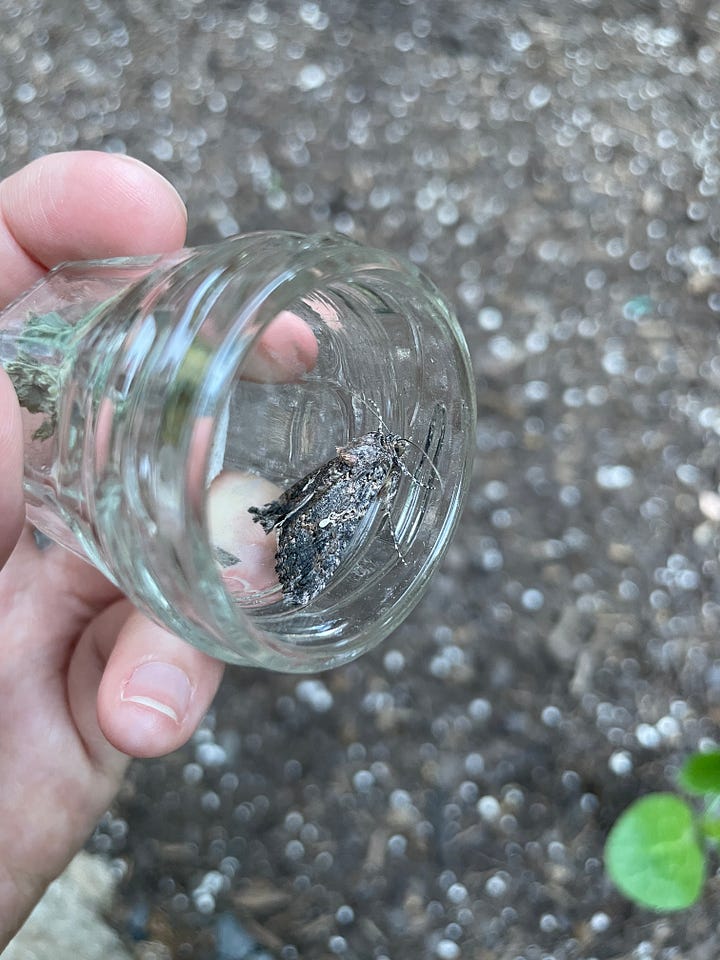
I couldn’t help but take it as a profound reminder of the disconnect that exists between us and our produce: we only encounter our fruits and vegetables after they’ve been chopped from the vine, prepackaged and sealed, washed and chemically treated and preserved. But it all comes from the outside, and sometimes the outside gets its hands on it first.
(I ate the kale leaf it came in on. There was nothing wrong with it.)
The second bug I had a close encounter with was something of a trickster, and, delightfully, something I had never seen or even heard of before. A bit of backstory: I’ve been attempting to garden in what was once a big patch of dirt in front of my building, and have been pretty successful this year. I discovered a couple of months into this project that, along with a few returning plants that had been planted by previous residents, one of my neighbors’ decayed jack-o-lanterns had seeded in the dirt over last winter, and now volunteer pumpkin vines have been sprouting up and completely taking over the area.
One morning, while walking down my front staircase, I saw what I thought was a huge wasp buzzing around the leaves. It was bright red and black and gray, coincidentally the same color combo as the spotted lanternfly invaders, and I took a few pictures from a distance so I could look it up later. When I finally discovered what it was, I was surprised to find out it wasn’t a wasp at all, but a wasp mimic moth somewhat un-appetizingly named the squash vine borer.
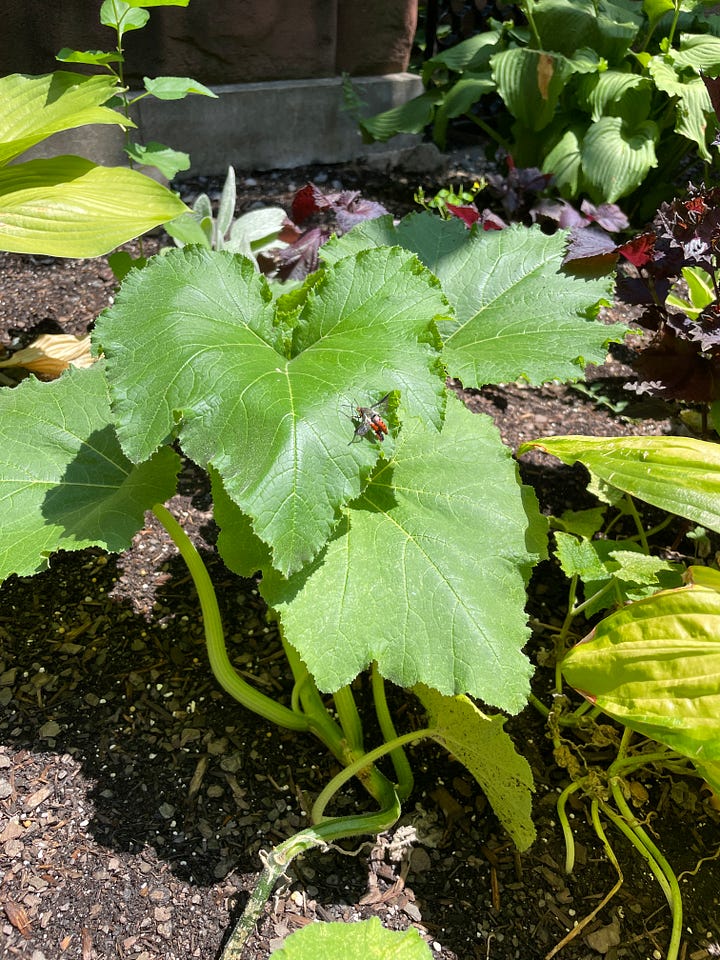

They lay their eggs on the leaves of apparently any plant in the squash family and when the caterpillars hatch they chew tunnels into the thick stems of the vine, eventually killing any part of the plant separated from the roots. This was the final proof I needed that I am indeed growing pumpkins, whose fragrant orange flowers are attracting pests probably from miles away. I haven’t seen any damage yet, but I’ll be keeping an eye out. Ultimately, since I didn’t plant these myself, the squash vine borers are welcome to a little pumpkin vine, as a treat.
IN BUG NEWS:
Minnesota has a new invasive insect called an elm zigzag sawfly. Has anyone asked Minnesota governor and Kamala Harris running mate Tim Walz for his stance on this?
-
*Fry up some gnocchi in a pan with garlic and s&p, throw in a bunch of torn up kale leaves (wash them first), combine with half and half or heavy cream, parmesan, and a bit of lemon juice, thank me later.


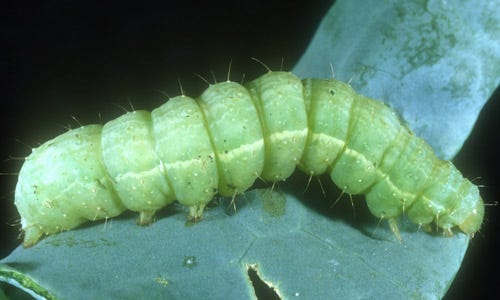
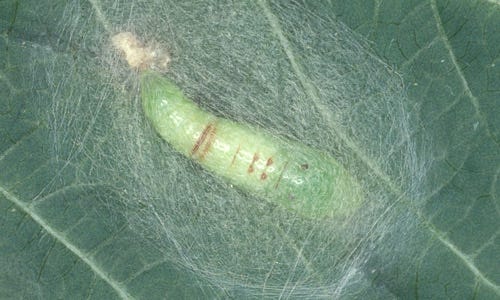
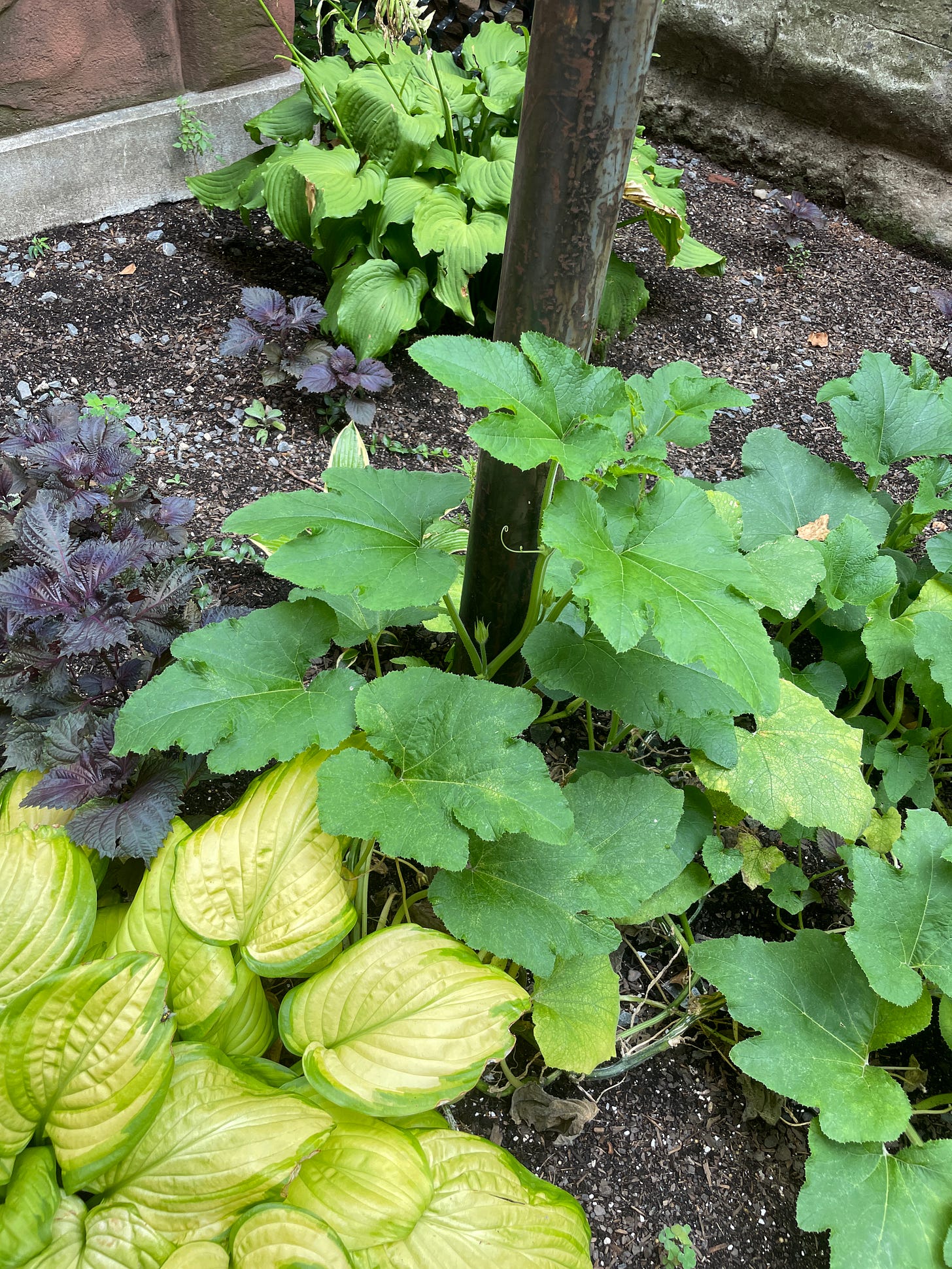
THE COOKING TIDBIT❤️